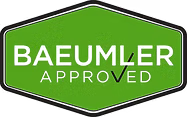What to do when your basement floods
Basement flooding in Toronto can strike any home with a basement, regardless of its flooding history. This unexpected disaster affects thousands of homeowners each year. Property damage and health hazards often follow in its wake. Quick action is crucial because your home’s furnishings must dry within 48 hours to prevent mould growth. Floodwater carries harmful chemicals and bacteria unless it comes from a clean source like a broken supply line. Your family’s health can be at risk from these contaminants. They can spread disease, cause allergic reactions, and damage materials even after the flood has gone. This guide outlines the exact steps you need when your basement floods. You’ll learn everything from safety protocols before entering to proper flood cleanup methods and prevention strategies. This information helps you reduce damage and keep your family’s health safe. Useful for current flooding or future events. Ensure Safety Before Entering the Flooded Basement Your safety comes first with a flooded basement Toronto. You should call a qualified professional as soon as you find flooding. They can check if it is safe to go inside. Flooded basements can be very dangerous. Check for electrical hazards Water and electricity make a deadly mix. You risk severe shock if you step into a flooded basement while the power is still on. Stay out if the water level has gone above electrical outlets, baseboard heaters, or your furnace. Let your electric company turn off the power at the meter. This is safer than trying to reach your breaker box through water. Watch for gas leaks or strange smells Gas leaks create one of the most important dangers during basement flooding Toronto. You need to call your gas company immediately. This is important if flood water is near gas equipment. This includes furnaces, water heaters, or stoves. Look out for these warning signs of a gas leak: Leave your home immediately and call 911 from outside if you smell any gas. Wear protective gear before entry Flood water usually contains sewage, bacteria, and harmful chemicals. You need proper protection to stay safe. Put on waterproof rubber boots to prevent electrical shock before entering a flooded basement. You should also wear rubber gloves, safety glasses, and a face mask to guard against contaminated water. Keep children, pregnant women, and people with breathing problems away from sewage-contaminated materials. Look for signs of structural damage Flooding can damage your home’s structure in some cases. Check your walls for discolouration, puffiness, or other signs. Weak floors or walls might give way, so you should talk to a professional if you notice anything concerning or feel unsure. Note that basement flood water might contain sewage from the sanitary sewer. This water has bacteria and viruses that could make your family sick. You must wash thoroughly after any contact with flood water. Identify the Source of the Flooding You need to locate where the basement flooding starts, clean up properly, and stop it from happening again. First, find exactly where the water comes from. Burst pipes Toronto vs. sewage backup Toronto The way you handle the problem depends on whether you’re dealing with clean water from burst pipes or contaminated sewage. Clean water from burst pipes or water supply lines looks clear. A sewer backup Toronto creates thick, black water with contaminants and viruses that can be dangerous to your health. Sewage usually backs up when something blocks the sewer lines and stops wastewater from flowing through the drainage pipes. This happens because of things stuck in the line (rags, paper towels, disposable wipes, grease buildup). Tree roots can also break into pipes, and collapsed sections let backfill material get inside the line. Check if flooding is from outside or inside The solution becomes clear once you know if water comes from inside or outside your home: Inside sources: Outside sources: You should also look for white, chalky residue (efflorescence) on walls. This usually means water seeps through foundation cracks. How to shut off the water supply safely A burst pipe inside means you should turn off the main water valve right away to limit damage. Most homes have this valve in the basement near the front or in the water heater room. Just turn it counterclockwise to stop the water flow. If sewage causes the flooding, don’t flush toilets or use appliances with drains – this makes things worse. The best thing to do is call your city’s water services (usually 311) to help figure out and fix sewer problems. Basement Flood Cleanup & Drying Process Toronto Quick action to remove water becomes significant after identifying the source and ensuring safety. Your house and furnishings have a lower chance of developing mold if dried within 48 hours. Remove standing water using pumps or vacuums A wet/dry vacuum works well with small amounts of water. You must rate the vacuum for wet use, and you should empty it frequently to prevent overflows. You can place a sump pump at the basement’s lowest point to extract maximum water during deeper flooding. Water may accumulate in concealed areas like behind appliances or under stairs, so check these spots carefully. Professional services with powerful pumps might serve you better during severe flooding. Dry out the space with fans and dehumidifiers Mold growth stops with rapid drying. You should position fans near windows or doorways to push damp air outside. Dehumidifiers should run continuously to extract moisture from the air. The doors and windows can stay open when outside weather allows, during low humidity and moderate temperatures. Otherwise, dehumidifiers remain your best option. Space heaters can help warm the air and speed up moisture evaporation. Disinfect surfaces and remove damaged items You need to determine whether you have clean water or sewage-contaminated water first. Hard, nonporous surfaces need a bleach and water solution. Mix 1 cup of bleach with 5 gallons of water. Let it sit for 6 minutes before rinsing. Flood-soaked flooring requires removal and disposal. The same applies to drywall and insulation contaminated with sewage or flood waters. Handle contaminated water with extra care Flood water








